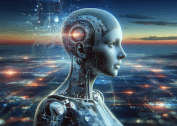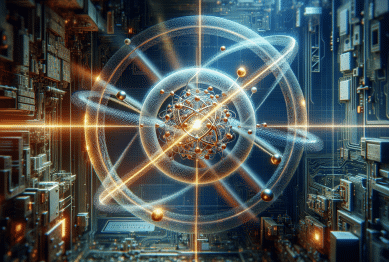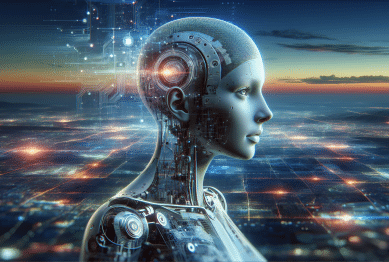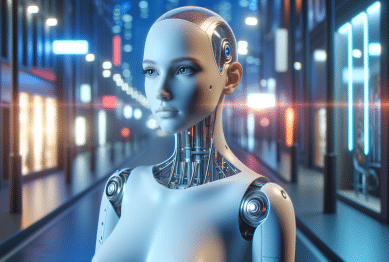Artificial intelligence sparks curiosity and sometimes uncertainty, but it also opens doors to remarkable progress. Explore how AI impacts daily life, decision-making, and future possibilities. This engaging guide introduces essential concepts, practical examples, and real-world applications, focusing on how artificial intelligence influences tech and science.
Demystifying Artificial Intelligence Basics
Artificial intelligence, often shortened to AI, refers to computer systems that simulate human intelligence processes. It covers learning, reasoning, perception, and decision-making. Today, AI is a powerful driver of innovation in fields ranging from robotics to data analysis. People commonly encounter it in voice assistants, search engines, or recommendation systems online. The core goal? To create technology that can analyze information, learn from experience, and adapt to new scenarios — just as people do.
Machine learning is a vital element within artificial intelligence. By training algorithms using large data sets, systems can recognize patterns and improve their performance over time. Take email spam filters—they learn to spot unwanted messages as users mark items. Deep learning, a subset of machine learning, uses ways inspired by brain structures called neural networks. This technology currently powers image and speech recognition software, making tasks like identifying faces or understanding spoken commands possible.
AI’s reach extends to many levels of daily interaction, whether that’s through personalized news feeds, virtual customer service, or navigation tools. While some advances require complex equipment, many applications rely on software tools and cloud services available to anyone with internet access. The expanding integration of artificial intelligence in routine processes offers both convenience and efficiency. Awareness of these fundamentals helps users engage confidently with new digital tools and innovations.
Everyday AI: Where You Experience It
AI technology is present in surprising places throughout the day. Take navigation apps—they use artificial intelligence algorithms for real-time traffic analysis, updating routes on the fly with data from thousands of sources. Smart virtual assistants such as Siri and Alexa interpret voice commands, answer questions, and help manage calendars, relying on natural language processing to understand user input. Even streaming platforms like Netflix employ AI to recommend new shows based on past viewing patterns.
Healthcare, once considered resistant to rapid technological change, also benefits from artificial intelligence innovations. AI-powered diagnostic tools analyze medical images, sometimes catching early signs of disease invisible to the human eye. Hospitals use AI systems to optimize appointment scheduling, manage resources, and match patients with available doctors. These AI-driven improvements reduce errors while supporting better patient care and results.
Retailers leverage artificial intelligence for inventory tracking, fraud detection, and personalized shopping suggestions. For example, e-commerce websites recommend products based on browsing history and prior purchases. Behind the scenes, AI helps predict which items may go out of stock, flag suspicious transactions, and even enhance customer service with chatbots that respond to inquiries 24/7. These innovations improve not only operational efficiency but also the customer experience.
How Machine Learning Powers Smart Decisions
At the heart of many advanced AI tools lies machine learning—a process in which systems learn from data without explicit instructions. Algorithms are fed vast amounts of information, searching for trends and connections. In business, this approach supports demand forecasting, financial modeling, and decision optimization. Companies use AI to detect unusual patterns, spotting fraud or cyberattacks faster than traditional manual methods ever could.
Natural language processing is a key subfield of artificial intelligence crucial for customer service and support. Virtual agents interpret text and spoken words, determine user intent, and produce responses that mimic real conversations. Over time, these agents become more effective by analyzing large conversation datasets and learning common phrases and expressions. This reduces wait times and service costs, freeing human staff for more complex requests.
Another powerful AI application is predictive analytics—systems that anticipate what might happen next, based on accumulated data. These tools are used in weather forecasting, financial trading, and even supply chain management. For example, AI can predict when equipment will likely need maintenance or replenishment, preventing costly breakdowns or shortages. By responding to likely future events rather than just reacting to current trends, organizations can plan with greater precision and confidence.
The Ethical Side of Artificial Intelligence
As AI systems become more advanced, important conversations emerge about ethics and responsible use. Privacy is a prime concern, with questions about how data is collected, stored, and shared. Artificial intelligence relies heavily on personal and behavioral data for training; thus, transparency and safeguards are crucial. Responsible organizations follow strict policies around data collection, with clear permissions and rigorous anonymization procedures.
Bias in artificial intelligence models is another pressing topic. Because AI learns from historical data, it may sometimes reinforce existing social or cultural prejudices found in that data. That’s why it’s vital to use diverse and balanced datasets, along with regular audits of AI models for unintended discriminatory effects. Researchers are working on fairness-oriented AI, striving to design systems that benefit broad populations without amplifying bias or discrimination.
Accountability in AI decision-making matters, too. This includes ensuring that automated decisions—such as loan approvals or hiring shortlists—remain explainable and subject to human review. Many organizations now employ transparency frameworks, making clear what factors influence automated decisions. Ongoing dialogue among policymakers, technologists, and the public keeps AI development on a path that aligns with shared societal values.
Artificial Intelligence in Scientific Discovery
AI is accelerating scientific research in ways previously unimaginable. In genomics, machine learning sifts through massive biological datasets to spot disease markers or genetic variations. Researchers use AI to design and simulate new drug compounds at record speed, reducing time and cost for clinical trials. Astronomers employ automated systems to analyze space images and discover distant exoplanets or asteroids with minimal manual effort.
Climate science also benefits from the power of artificial intelligence. AI-enhanced models process large volumes of meteorological data, helping scientists understand weather patterns, model climate scenarios, and predict natural disasters more accurately. These advances are vital for developing effective strategies in agriculture, migration, and disaster preparedness, all of which depend on reliable scientific forecasts.
In neuroscience, AI helps unravel the complex workings of the human brain. Deep learning algorithms analyze brain scans, identifying patterns linked to neurological diseases such as Alzheimer’s or epilepsy. This technology is aiding early diagnosis, guiding treatment options, and deepening our understanding of the mind. With continued progress, artificial intelligence promises to unlock new frontiers in all areas of science.
Preparing for a Future with AI
As artificial intelligence continues to evolve, digital skills become increasingly valuable in the workforce. Individuals and organizations can benefit from staying informed about technological advances, seeking practical training and workshops. Public libraries, universities, and online platforms offer free and structured AI learning courses accessible to all skill levels. Taking proactive steps to understand AI fundamentals empowers users and helps prepare for emerging opportunities.
The future of AI is not only about automation but also about collaboration—humans and intelligent machines working together. Many experts envision a world where AI helps professionals solve complex problems and frees them from repetitive tasks. Ethical considerations, adaptability, and lifelong learning stand out as guiding principles for success in a tech-driven environment. Exploring the evolving relationship between humans and machines can spark exciting discussions around innovation, ethics, and creativity.
As more industries integrate AI into daily operations, new career pathways, and research directions continue to emerge. Participating in AI communities, following trustworthy news sources, or joining local workshops can help individuals remain adaptable and resilient. Understanding the core ideas behind artificial intelligence is a stepping stone to harnessing its potential, both today and in the years ahead.
References
1. Stanford University. (n.d.). Artificial Intelligence: A Modern Approach. Retrieved from https://ai.stanford.edu
2. MIT News. (n.d.). How AI is Changing Science. Retrieved from https://news.mit.edu/2021/ai-science-0325
3. National Institutes of Health. (n.d.). AI in Medical Imaging. Retrieved from https://www.nih.gov/news-events/nih-research-matters/computers-diagnosing-disease
4. Brookings Institution. (n.d.). Assessing Artificial Intelligence’s Risks and Opportunities. Retrieved from https://www.brookings.edu/research/assessing-artificial-intelligences-risks-and-opportunities/
5. European Commission. (n.d.). Ethics Guidelines for Trustworthy Artificial Intelligence. Retrieved from https://digital-strategy.ec.europa.eu/en/library/ethics-guidelines-trustworthy-ai
6. National Aeronautics and Space Administration. (n.d.). AI and Machine Learning. Retrieved from https://www.nasa.gov/audience/forstudents/5-8/features/nasa-knows/what-is-artificial-intelligence-58.html









